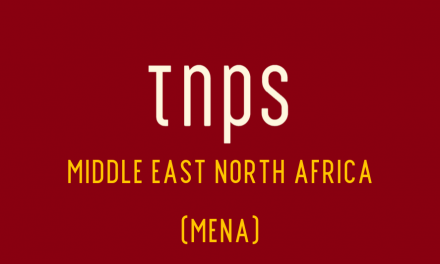With Netflix struggling to maintain momentum in the US, where competition is fierce and saturation looms, the company has decided to focus investor attention on its global potential.
It’s a lesson publishers would do well to take note of, whether currently engaged in the digital subscription opportunity or still in denial, clinging to a pre-2010s business model that hasn’t caught up with reality.
Earlier this year Netflix saw its US-subscriber base drop, not due to any nonsensical notion of “screen fatigue” or waning interest in the format, but because the video subscription market in North America has reached a new stage of consolidation and dog-eat-dog battles for market share.
“Screen fatigue” is of course an amusing, if nonsensical, favourite of the naysayers in the publishing industry who will do anything but admit that publishers deliberately raised ebook prices to put a brake on the market sector and protect their print investment.
In tandem with that we have publishers who studiously avoid the subscription model, in part for the same reasons, and in part because the North America subscription model is dominated by Amazon’s Kindle Unlimited.
All quite understandable responses by publishers to sustain the domestic market status quo and keep a vestige of control.
But in doing so many publishers have allowed their North America strategy to inform their global strategy, when they might better have taken a leaf from the Netflix or Storytel book and embraced global digital as a parallel opportunity to tap into virgin markets.
Setting aside China as a special case with its own challenges and opportunities outside the scope of this essay, what we see in video and publishing is two contrary perspectives on opportunity.
Netflix understands that the USA, while the biggest single market by far and an essential place to be, is a small part of the global market.
Publishers, by contrast, understand that the USA is the largest single market and essential to be in, and treat the rest of the world (a handful of countries aside) as an afterthought.
That’s in part down to historical drag. That is to say, in the pre-digital world before the 2010s the publishing opportunity map was drawn up based on viable print production and distribution capacity, with the ROI dwindling fast once we stepped outside the top half-dozen markets.
In a print-driven publishing world where economies of scale were everything, it just didn’t make economic sense to even think about publishing a book globally.
And it was the same with video. As visual media, films and TV of course travel easier than books, but even so no production company would make a film or TV series in the US and be thinking about how it might play in Nigeria, India, the Philippines or Malaysia, even though these all share a common language.
Netflix changed that perception pretty much overnight when it decided to embrace global as a strategy, not treat it as an afterthought.
Today Netflix is available almost everywhere in the world (hold-out states like China, North Korea, etc, being political decisions beyond Netflix’s control), as part of deliberate and conscious strategy to reduce dependence on a handful of overly-competetive markets.

Let’s let Vox Recode take up this story:
One practical effect of that strategy is that Netflix is focused on grabbing global rights whenever it buys or creates programming, meaning that a Netflix customer in Minneapolis can watch Stranger Things at the same time as a Netflix customer in Tokyo. And Netflix executives frequently talk about shows that started off in one market, like Spain’s Money Heist, that go on to perform around the world.
The Vox Recode analysis comes as Netflix filed some vague global numbers with Securities and Exchange Commission this week.
In Europe, the Middle East and Africa, for instance, Netflix had 19.7 million subscribers at the end of March 2017; by the end of September of this year, that number was up to 47.4 million. And while Asia is currently Netflix’s smallest market, it is growing rapidly, from 4.7 million subscribers to 14.5 million in the same time frame.
Okay, so a value of 47.4 million that lumps in Europe, the Middle East and Africa is not that helpful. We can only guess at how that breaks down even in western Europe, where Netflix is well-established, let alone across the three regions.
As per this graphic from Vox Recode, all the numbers are vague:

Asia Pacific could be mostly Australia or mostly India or who knows.
But what matters here is the growth trajectories.

At which point, let’s step back and see the bigger picture.
Netflix is a digital company that has no analogue interests to protect. It is therefore free to embrace the global digital opportunity.
While of course some Netflix content from third parties comes with territorial restrictions, Netflix focuses on content without restrictions, not least its own.
Netflix understands territorial restrictions are a throwback to a bygone era and have no meaningful role to play in a digital world.
Other throwbacks to a pre-digital era are the ideas that content will not travel, that content must be at a fixed price, and that everyone should pay the same price.
Netflix, Storytel, Scribd and others have shown those notions to be flawed.
While Storytel has made a point of launching in new markets only once it has localised content available, including original content it commissions itself, its catalogue is bulked out by international content, notably in English, that in turn attracts traffic and makes the offering more appealing to consumers.
Netflix has no such qualms, and makes as much of its catalogue as it can available to as many people in as many countries as it can, regardless of whether it has localised content available.
And the strategy works. Not least because consumer prices are localised – a consideration many publishers have yet to address.
A reader living in Nigeria or Malaysia or Papua New Guinea can buy digital books from Scribd or Kobo, but they’ll have to pay the same price as if they were in the US. That’s in part the publishers fault for not setting territorial pricing where that is an option, and part the fault of Scribd and Kobo, who only make that content available through the US store.
Netflix (and Storytel) by contrast has regional pricing models to ensure maximum affordability and reach.
Per Vox Recode,
Netflix also told investors how much money it brings in from subscribers in different parts of the world. In the US, the company generates an average of $12.36 in revenue per month for each customer; but in Latin America, where it offers different pricing and promotions, that number is down to $8.21 a month. In India Netflix has started selling mobile subscriptions at just $3 per month.
At which point some publishers and authors will be aghast, screaming that their content is worth more than $3 a month.
But that’s to totally miss the point of subscription. Subscription is about generating recurring revenues in volume from diverse streams, and all importantly volume that can, if developed, far exceed the fixed price volume brought in by fixed streams at a la carte prices.
Take the USA. With 312 million people online it’s a natural place for any digital operator to focus. And that’s exactly what Netflix did. But it also saw – and engaged with – the bigger picture.
In Q3 this year North America accounted for just 67.1 million of Netflix total Q3 revenue of 158.4 million. North America here being USA and Canada, so we can safely say the US accounted for less than 42% (and likely well below 40%) of Netflix revenue.
More importantly, 58% of Netflix revenue came in from its reach outside the USA.
Which brings us back to that 312 million Americans online, which by the way is very close to saturation at 95.6% internet penetration. There is almost zero room for further growth.
Sure it’s a big number. But in global terms? It’s less than 7% of the world’s internet users.
As we say goodbye to 2019 there are 560 million people online just in India, and India has yet to reach 41% penetration. Now take a second look at that $3 monthly subscription to Netflix India.
Asia-Pacific revenue for Netflix last quarter was “only” $14.5 million but Netflix is thinking about tomorrow, not yesterday. There are 2.3 billion Asians online, and even if we factor out China’s 854 million internet users that’s still some 2.2 billion that are easily within reach. Ironically, China is easier for publishers to access than for Netflix, and some publishers are getting in on the act. But not many.
Now let’s look at the other Netflix regions.
Latin America, already bringing in almost $30 million for Netflix last quarter, has 784 million people online.
For the mathematically challenged, that means the Latin America digital user base is already 2.5 times the size of the USA, and it’s only at 77% penetration.
Now let’s consider the Netflix region EMEA – that is Europe Middle East Africa.
We can factor Iran out of the Middle East potential, as a no-go area for Netflix, but that still leaves 113 million Arabs online in the Middle East. (220 Arabs online if we include North Africa.)
When we turn to Africa, widely regarded as a digital backwater, we find Netflix potential reach of 522 million internet users, and the continent is still at 39% internet penetration.
In fact the online count for the seven largest internet nations in Africa collectively equal the US’s digital population. In the near future there will be more than double the number of internet users in Africa as in the USA, and likely 800 million by mid-decade.
And then there’s Europe, which with 727 million people online is already 2.3 times the size of the US digital consumer base.
All told there are 4.5 billion people online around the world as we start 2020 and the world is at less than 60% internet penetration.
Back in the year 2000 there were just 413 million people online worldwide. Netflix was less than 3 years old and still running a DVD rental service, competing with Blockbuster. Netflix launched with less than 1,000 DVD titles.
In 2007 Netflix woke up to the fact that the internet could be used to stream video as well as sell physical products online. The same year Amazon launched the Kindle store. By then the global internet had already crossed one billion users, but for Netflix and Amazon the US was the only digital show in town.
In 2010 internet use worldwide crossed 2 billion and both companies began to wake up to the global digital potential. Publishers mostly looked the other way.
Fast forward another ten years and the world’s internet population has more than doubled, to 4.5 billion.
Let’s just pause to take that in. More than two billion additional internet users have come into being since Amazon opened its second Kindle store in the UK.
By 2030 the expectation is that it will almost double again, to 7.5 million.
Netflix, Storytel, Ubook, and Scribd understands this. And they understand that the subscription model is the single best way to tap into that potential.
Publishers, not so much.
Which means while Netflix and its myriad fellow-travellers on the global video circuit will continue to blaze trails around the world, Storytel, Scribd, Bookmate, Ubook, and all the other digital books subscription services, which already account for millions of subscribers, can only move as fast as publishers will open up their content and divest themselves of anachronistic territorial restrictions and antiquated pricing models that belong in a different era.
In the next decade we will see that happen more and more.
But let’s be clear that the single biggest brake on the development of global digital books subscription is not demand, but insufficient supply.
But rather a conscious decision by publishers to restrict supply.





